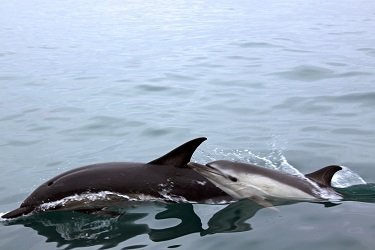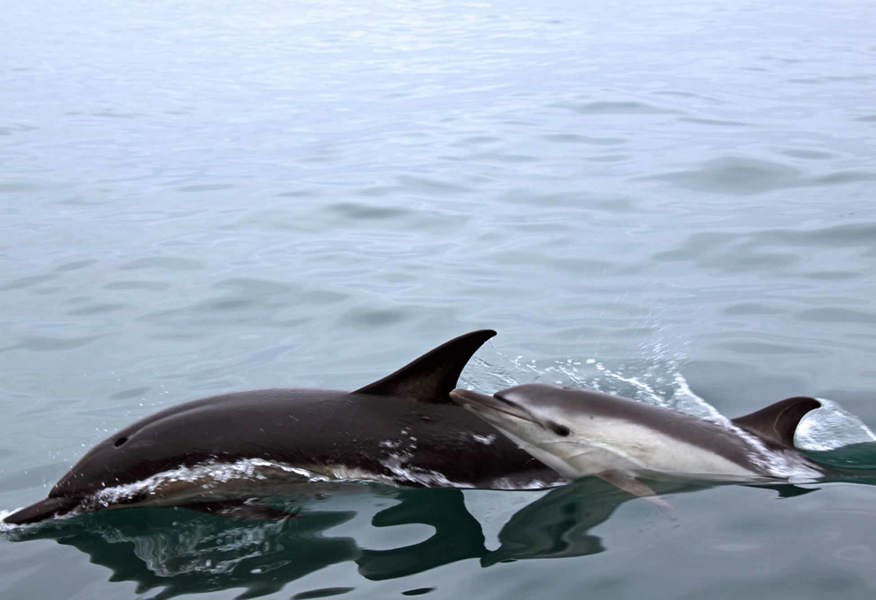 The Milford Haven Waterway is a special type of estuary, a river valley flooded after the last glaciation called a ria: it is the largest estuary in Wales, and its sheltered waters and very high tidal range provide habitats and resources for an abundance of wildlife. Its significance is such that it is designated as part of the Pembrokeshire Marine Special Area of Conservation (SAC) which is recognition that the area is one of the best in Europe for its marine wildlife. Parts of the Waterway also contribute to the West Wales Marine SAC, and the area hosts a number of other marine protected areas in recognition of the special natural history we have in this part of the world.
The Milford Haven Waterway is a special type of estuary, a river valley flooded after the last glaciation called a ria: it is the largest estuary in Wales, and its sheltered waters and very high tidal range provide habitats and resources for an abundance of wildlife. Its significance is such that it is designated as part of the Pembrokeshire Marine Special Area of Conservation (SAC) which is recognition that the area is one of the best in Europe for its marine wildlife. Parts of the Waterway also contribute to the West Wales Marine SAC, and the area hosts a number of other marine protected areas in recognition of the special natural history we have in this part of the world.
While a great deal of the wildlife diversity lives under the sea and can be hard to see without going snorkelling or diving, sometimes beautiful and charismatic species can be seen at the surface, be they resident or visiting species. Over the last few months we have been lucky enough to spot many different species, but here are a few that particularly caught our eye:
- A pod of at least seven common dolphins feeding off Wear Spit. Common dolphins often feed and play in large numbers in St Bride’s Bay and around Skomer, and only occasionally come into the Haven to fish.
- Harbour porpoise are much more retiring creatures, but come into the Haven regularly, especially at night, having been spotted as far up the estuary as Llangwm – they are probably the most often-seen cetacean in the Waterway, but Risso’s dolphins have been known to visit, and in more offshore waters, minke whales, humpback whales and even orcas have been spotted.
- It has been known that young male ospreys occasionally visited the Haven, but this year during the annual shelduck survey, our Water Ranger had a spectacular view of an osprey with a grey mullet in its talons over the Eastern Cleddau. They may be making a more regular home on the estuary, and perhaps one day may even breed here.
- One of the most charismatic species on the Waterway, otters are among the most difficult to spot, but a family was recently observed at Benton Castle. Much more common to see are signs of otter activity such as spraint (otters’ droppings), which is often found on the coastal path. The estuary offers plenty of feeding resource and safe spots for otters to breed, but they’re very discreet indeed.
- Manx shearwater are an iconic Pembrokeshire seabird, and are often spotted onshore in the late summer when the fledging young may become stranded. Dozens are rescued and released off onto their long migration by volunteers every year.
Appealing as these species are, they are part of a whole ecosystem in which relationships between species and habitats can be complex. Among the many reasons that the Port has areas that are designated ‘Dead Slow, Minimum Wake’ is the presence of wildlife and delicate habitats in the upper reaches, including the many species of wading birds that feed on the foreshore, the regionally important shelduck young that are reared over the summer, and seals that are regularly spotted off Llangwm. In the context of a changing climate, it is more important than ever that we work to protect and conserve our delicately balanced ecosystems, and the Port has an important role to play in that. For more information on the Waterway’s habitat visit www.mhpa.co.uk/the-milford-haven-waterway


